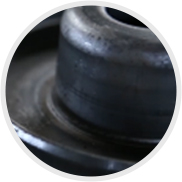 Afrikaans
Afrikaans  Albanian
Albanian  Amharic
Amharic  Arabic
Arabic  Armenian
Armenian  Azerbaijani
Azerbaijani  Basque
Basque  Belarusian
Belarusian  Bengali
Bengali  Bosnian
Bosnian  Bulgarian
Bulgarian  Catalan
Catalan  Cebuano
Cebuano  Corsican
Corsican  Croatian
Croatian  Czech
Czech  Danish
Danish  Dutch
Dutch  English
English  Esperanto
Esperanto  Estonian
Estonian  Finnish
Finnish  French
French  Frisian
Frisian  Galician
Galician  Georgian
Georgian  German
German  Greek
Greek  Gujarati
Gujarati  Haitian Creole
Haitian Creole  hausa
hausa  hawaiian
hawaiian  Hebrew
Hebrew  Hindi
Hindi  Miao
Miao  Hungarian
Hungarian  Icelandic
Icelandic  igbo
igbo  Indonesian
Indonesian  irish
irish  Italian
Italian  Japanese
Japanese  Javanese
Javanese  Kannada
Kannada  kazakh
kazakh  Khmer
Khmer  Rwandese
Rwandese  Korean
Korean  Kurdish
Kurdish  Kyrgyz
Kyrgyz  Lao
Lao  Latin
Latin  Latvian
Latvian  Lithuanian
Lithuanian  Luxembourgish
Luxembourgish  Macedonian
Macedonian  Malgashi
Malgashi  Malay
Malay  Malayalam
Malayalam  Maltese
Maltese  Maori
Maori  Marathi
Marathi  Mongolian
Mongolian  Myanmar
Myanmar  Nepali
Nepali  Norwegian
Norwegian  Norwegian
Norwegian  Occitan
Occitan  Pashto
Pashto  Persian
Persian  Polish
Polish  Portuguese
Portuguese  Punjabi
Punjabi  Romanian
Romanian  Russian
Russian  Samoan
Samoan  Scottish Gaelic
Scottish Gaelic  Serbian
Serbian  Sesotho
Sesotho  Shona
Shona  Sindhi
Sindhi  Sinhala
Sinhala  Slovak
Slovak  Slovenian
Slovenian  Somali
Somali  Spanish
Spanish  Sundanese
Sundanese  Swahili
Swahili  Swedish
Swedish  Tagalog
Tagalog  Tajik
Tajik  Tamil
Tamil  Tatar
Tatar  Telugu
Telugu  Thai
Thai  Turkish
Turkish  Turkmen
Turkmen  Ukrainian
Ukrainian  Urdu
Urdu  Uighur
Uighur  Uzbek
Uzbek  Vietnamese
Vietnamese  Welsh
Welsh  Bantu
Bantu  Yiddish
Yiddish  Yoruba
Yoruba  Zulu
Zulu drum lagging rubber
Understanding Drum Lagging Rubber Functionality and Applications
Drum lagging rubber is an essential component in various industrial applications, primarily used for enhancing the performance and longevity of conveyor belts, pulleys, and drums in material handling operations. This durable and resilient material offers numerous benefits that can significantly impact operational efficiency and safety in mining, manufacturing, and other heavy-duty industries.
What is Drum Lagging Rubber?
Drum lagging refers to the rubber material that is applied to the surface of drums and pulleys. It is designed to provide a better grip, reduce slippage, and prolong the life of the conveyor system. The rubber is usually bonded to the drum's surface either through vulcanization or adhesive methods, ensuring a secure and lasting connection. Depending on the application, different types of rubber compounds can be used, each with its unique properties suited to specific environmental conditions.
Benefits of Drum Lagging Rubber
1. Improved Traction One of the primary functions of drum lagging is to enhance traction between the drum and the conveyor belt. This is crucial in preventing slippage, which can lead to material loss and inefficiencies in operations. With improved grip, the system operates more smoothly and effectively.
2. Reduced Wear and Tear By reducing slippage, drum lagging helps to decrease the wear and tear on both the drums and the conveyor belts. This can lead to lower maintenance costs and longer intervals between replacements, which is beneficial for any operation looking to optimize its operational budget.
3. Noise Reduction The application of rubber lagging can also contribute to noise reduction in industrial environments. The rubber absorbs some of the vibrations and sounds typically generated during material handling, creating a quieter working environment.
drum lagging rubber

4. Enhanced Load Support Drum lagging rubber can help support heavy loads more effectively, distributing the weight evenly across the drum surface. This ensures that the system can handle large volumes of material without compromising functionality.
5. Protection against Contaminants In many industrial settings, drums and pulleys are exposed to dirt, water, and other contaminants that can degrade performance. Rubber lagging acts as a protective barrier, reducing the potential for rust and other forms of wear.
Applications of Drum Lagging Rubber
Drum lagging rubber is widely used in various industries. For instance, it is commonly found in mining operations, where heavy materials need to be transported efficiently. The harsh conditions of mining—such as the presence of rocks and dust—make it essential to have reliable and durable components.
Additionally, the manufacturing industry also relies on drum lagging for similar reasons. In warehouses that handle large volumes of goods, maintaining the integrity of the conveyor systems is critical to ensuring seamless operations. The automotive and food processing sectors also benefit from the enhanced traction and reduced wear provided by drum lagging rubber.
Conclusion
Drum lagging rubber is a vital component in the realm of material handling, all but ensuring the efficiency and safety of operations across various industries. Its numerous advantages—from improved traction and reduced noise to enhanced load support—highlight its importance in reducing operational costs and extending equipment life. As industries continue to evolve and embrace more complex conveyor systems, the role of drum lagging rubber will undoubtedly remain significant, providing a reliable solution for heavy-duty applications. Investing in high-quality drum lagging can lead to more efficient operations, making it a key consideration for businesses looking to enhance their productivity and bottom line.
-
Revolutionizing Conveyor Reliability with Advanced Rubber Lagging PulleysNewsJul.22,2025
-
Powering Precision and Durability with Expert Manufacturers of Conveyor ComponentsNewsJul.22,2025
-
Optimizing Conveyor Systems with Advanced Conveyor AccessoriesNewsJul.22,2025
-
Maximize Conveyor Efficiency with Quality Conveyor Idler PulleysNewsJul.22,2025
-
Future-Proof Your Conveyor System with High-Performance Polyurethane RollerNewsJul.22,2025
-
Driving Efficiency Forward with Quality Idlers and RollersNewsJul.22,2025





























